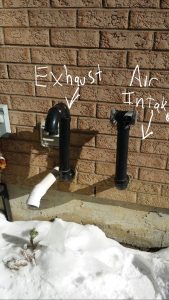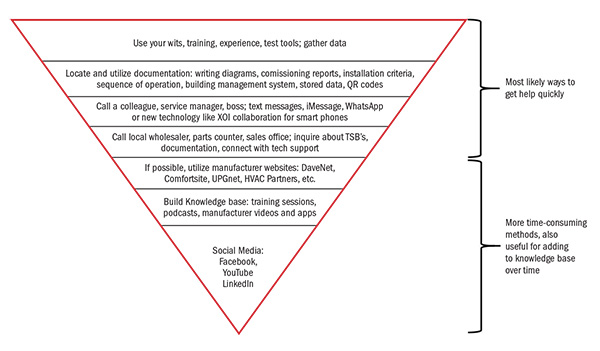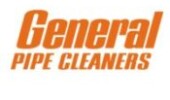
Help!
April 7, 2020 | By Ian McTeer
Resources that installers and technicians can turn to for help.
 Help!
Help!
I need somebody
Help, not just anybody
Help, you know I need someone.
Help!
The Beatles’ famous lyric might apply to just about everyone at some time in their lives, but tradespeople, especially HVAC mechanics, often require specialized help and usually at the most inopportune time. I’ll never forget my being dispatched to a no heat call on a boiler with a rosette burner, soapstone pilot and bizarre mechanical gas valve; Help!
With precious little written material left behind and still many years before the smart phone, my only alternative was to telephone, from the customer’s phone, to my dispatcher and admit I could not repair the unit.
At one time in the trades, asking for help might have reflected badly on one’s competence, hence an isolated technician might have otherwise struggled mightily in ignorance and frustration literally bull-moosing a way out, whatever that might have entailed.
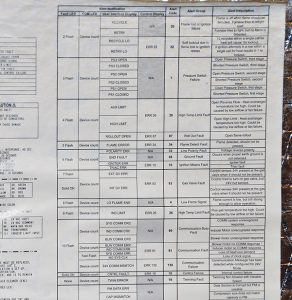
When documentation is lost or unavailable, be sure to examine the unit’s door panels for valuable information
such as this list of control board flash codes.
Fortunately for me, a tech with rosette burner experience was nearby and met me on the job. I learned all about soapstone pilot burners in 10 minutes; maybe there’s one left in an HVAC museum somewhere! Today’s HVAC equipment is sophisticated requiring technicians to have a vastly greater built-in library of knowledge. Not only that, how one procures necessary information has become a fundamental skill. Installers and service technicians should be familiar with these aspects of HVAC philosophy, namely:
- Specification: why is this machine doing this job?
- Installation: is this unit installed properly? Maybe that explains all these service calls.
- Commissioning: has this unit been set-up to do this job?
- Maintenance: how long since the coils were cleaned, blower wheel inspected?
Getting Help
Who hasn’t heard the telephone announcement, “All of our agents are busy serving other customers” while making a phone call for assistance? An HVAC technician working on a downed rooftop unit during a polar vortex cannot tolerate being told, “Your estimated wait time is 58 minutes.”
I don’t want to sound patronizing having been in the position of needing help “right now” more than once over the years, but technicians must build up their skills and have confidence in themselves. Even with experience gained over time, the dynamic nature of our industry means Benjamin Franklin’s pithy saying from the 1750’s, “there are no gains, without pains” is ever truer today.
The pains, for HVAC technicians, are constantly running into unfamiliar products, whether new or old, combined with incomplete documentation, bizarre fault codes (Err 179.04, INV T EX DER…what?) and the secretive nature of some manufacturers trying to exclude smaller contractors or otherwise non-approved servicers from profiting ahead of their dealer families. The gains, of course, are properly serviced units doing precisely what their owners expect of them. Such gains are the key to future business.
Telephone Help
An HVAC manufacturer’s practice of establishing dealer networks and favouring everyone involved is a business philosophy that has stood the test of time. However, regardless of one’s allegiance, improperly functioning equipment creates no end of trouble for the end user. For any technician whose entire bag of tricks has been exhausted on a unit, calling a manufacturer’s technical representative is likely a last resort. Knowing who to call is just one part of the battle, more on that later.
Having fielded many calls from techs, here’s some advice on etiquette gleaned from my experiences: You may be frustrated, such a feeling is perfectly understandable, but please, do not start the conversation with, “that piece of junk your company makes is garbage.” Instead, say something like, “I’m not used to working on this product, and there’s no information left behind to help me get it going.”
Always have the unit model and serial number available. Include the date of installation (if known) or other descriptors like the unit appears to be installed improperly; provide details.
Ask if a Technical Service Bulletin has been issued for this problem.
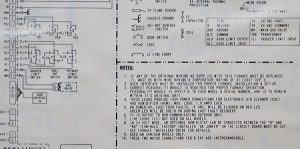
Assuming the door sticker is still there or even readable, be sure to look for extra detail in the “Notes” section when provided by the manufacturer. For example, Note 5 says, “On power-up, last four faults, if any, will be flashed on Red Led.” Even if the customer has tried resetting the board, the faults have not been lost. Good to know!
Mention everything you have done so far, include all relevant data like “the suction pressure is 125 psig,” or “I cleaned the coils and blower wheel,” or “the input voltage is 232 VAC.” Don’t say, “everything is fine.” Be able to provide, for example, working gas pressure even though it may not seem relevant to a control board lockout problem. Saying the gas pressure “is fine” is not helpful.
When working on rooftop or other outdoor equipment, in summer or winter, be sure to find a place out of the wind before placing a call. The phone’s microphone is easily overwhelmed by the wind, and your voice will be completely drowned out. This is especially difficult when the rep asks you to perform various tests and component checks. I empathized with technicians, especially during the polar vortex, doing their best to not only get the customer heat, but to stay warm as well. It’s more than a little difficult to probe a well-hidden circuit board for a 10 volt turn on command signal with bare fingers and a fierce wind blowing up one’s backside. If you have a smart phone, it may be possible to send a picture or video but be aware that for security reasons, such helpful tools may not be allowed into the company’s network. A technician inquiring about a venting situation once sent me a photo (see Figure 1) to my personal phone with relevant detail marked on the image. My answer was, “No, that’s not the correct set-up, details following.” In my experience, such phone calls resolved many problem scenarios, however, there were several situations that involved a site visit.
Site Visits
Manufacturers will often have a field service representative or engineer visit a site for a variety of reasons. Sometimes it’s to monitor the start-up of a new product or to assist a new contractor with installation and commissioning procedures. Too often, however, it’s because a unit has failed completely or experiences intermittent failures that rarely ever occur while the technician is on site and a telephone technical help session did not resolve the issue.
If a site visit is going to happen, it’s usually the result of one or more tech calls and can go one of several ways, for example: Some site visits are resolved quickly. The offending issue may be unknown to an inexperienced technician or something was overlooked.
Sometimes, it’s an equipment specification error (wrong unit for the job) or improper installation.
Often, one or more technicians have made several service calls to the unit each trying different remedies that fail to resolve the issue.
Remembering that the end-user, especially a residential customer, has suffered tremendous inconvenience, even missing work, the atmosphere may be tense and very uncomfortable for all. Sometimes the end-user refuses to allow the original servicer to attend so that the manufacturer’s representative needs to find another contractor willing to get involved.
Site visits typically involve some expense; sometimes an equipment buy-back is the only remedy; sometimes the contractor is on the hook for mistakes; sometimes the end-user made unauthorized modifications; and sometimes the issue goes to small claims court.
In short, intermittent, perplexing issues don’t fix themselves. When in doubt, get help.
Hierarchy of Help
When a technician crosses paths with a unit that he or she is familiar with but is doing entirely unexpected things, or a tech encounters a completely unfamiliar unit that isn’t working, a time sensitive repair often brings untold anxiety for the technician. But the cruel fact is this: you’re on your own!
“Praemonitus, praemunitus” an old Roman proverb means that having knowledge in advance helps one to be prepared. True enough, no one can possess or retain enough HVAC knowledge to suit every instance; however, knowing who to call and where to look for help is of paramount importance.
I took Maslow’s Pyramid of Needs and inverted it into a reverse hierarchy as a guide for technicians or installers looking for resources to guide them through a jam (Figure 2).
Note that the topmost category says to utilize one’s training and experience to gather good data: what’s the unit doing or not doing, are there any unusual noises, erratic operation and so on. Have these details ready to relate to your contact person.
Social media, in my view, is the last place one should look for immediate help because it’s simply too hard to sort through all the misinformation found on platforms such as YouTube and Facebook. While there may be techs who have established top-drawer links on social media, I’m not ready to endorse a random YouTube search. Some of these videos are not grounded in appropriate industry standards; i.e. they demonstrate risky and dangerous practices and must be avoided.
Build Your Knowledge Base
I haven’t been in the field for many years, but I still do some research about HVAC topics every week. There is so much to know, but my focus is on building a repertoire of strong HVAC voices so that I’ll have a place to start my searches.
Here’s a short list of some bona fide resources that I value:
- Of course, HPAC magazine!
- HRAI, Canada’s premier HVAC education organization.
- Appropriate Designs, hydronicpros.com is John Siegenthaler’s website “dedicated to advancing the science and proper application of modern hydronic heating.” John is also a regular contributor to HPAC magazine.
- Robert Bean, healthyheating.com. Is there an HVAC topic Robert hasn’t covered from the engineering side?
- Dan Holohan, heatinghelp.com. Dan is a long-time HVAC educator, steam heating system guru and he tells some great stories about the industry.
- Allison A. Bailes III, PhD, energyvanguard.com. Allison provides detailed information about HVAC in tight housing, duct design, zoning and heat pumps.
- Bryan Orr, hvacrschool.com. Bryan’s focus is primarily on residential cooling topics since he’s based in Florida, however, the information provided is top drawer for technicians and installers everywhere. Signup for his Daily Tech Tip and listen to his podcasts.
- Gary McReadie, hvacknowitall.com, is a true-blue technician and budding influencer working on mainly commercial equipment in the GTA. Gary produces short videos on subjects ranging from how to use specific tools to how to become an HVAC tech. He’s on several social media platforms and produces an hour-long podcast on a regular basis. Gary is at the CMPX show.
- This manufacturer website, climate.emerson.com, is all about Copeland compressors, including information about training and tech support along with a helpful tools and a resources link.
- Also, provincial organizations such as The Ontario Refrigeration and Air Conditioning Contractors Association along with the UA Local 787 educate workers through the Joint Training and Apprenticeship Committee (JTAC), a huge knowledge base for unionized technicians.
I have only touched on a few resources, there are plenty more. Some say that “life is a process of learning, forgetting, and then learning again.” That’s certainly true of HVAC life! Thus, getting help starts with the technician and his or her ability to call upon a personal database of stored knowledge. Remember: Fore-warned is forearmed.

